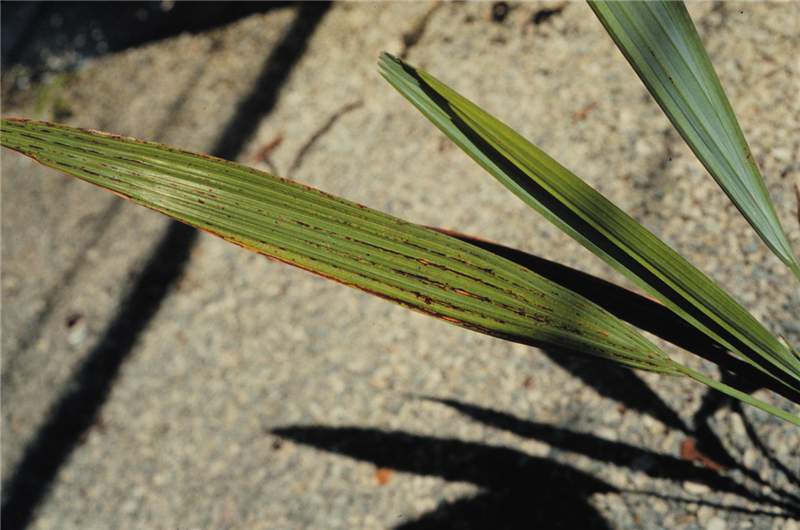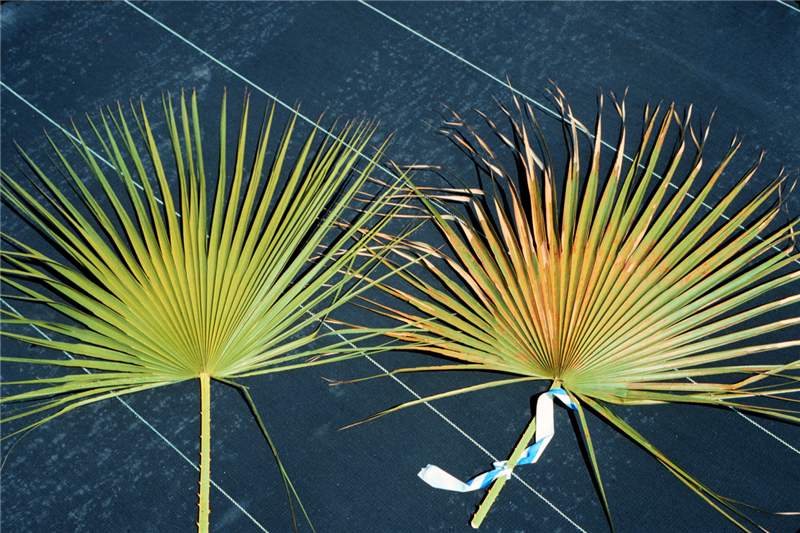Foliar Spray Toxicity
|
Figure 1. Foliar injury caused by a copper sulfate foliar spray on Acoelorrhaphe wrightii seedling. Photo by T.K. Broschat
|
|
Figure 2. Foliar injury on Acoelorrhaphe wrightii caused by a copper sulfate spray (right). Untreated leaf on the left. Photo by T.K. Broschat
|
Symptoms
Foliar spray injury appears as desiccation of the foliage that is contacted by the chemical or salt spray. Necroticnecrotic:
see necrosis
spotting and extensive leafletleaflet:
divisions of pinnate leaves
tip necrosisnecrosis:
dead tissue, usually desiccated and brown to gray in color
are typical symptoms (Figs. 1 and 2). Depending on the chemical and its concentration, some palms may be killed by the spray, while others may experience only localized injury and new growth will appear normal.
Cause
Salt spray from the ocean or intentional or accidental spray applications of toxic chemicals to the foliage can cause necrosisnecrosis:
dead tissue, usually desiccated and brown to gray in color
and desiccation of the foliage contacted by the spray.
Occurrence
Foliar salt injury is fairly common along seashores during dry periods with strong onshore winds. Many species are affected by salt spray, but Cocos nucifera, Serenoa repens, Allagoptera arenaria, Hyophorbe spp., Coccothrinax spp., Thrinax spp., and Pseudophoenix spp. are most tolerant of seashore conditions. Sprays of toxic chemicals can affect almost any species.




